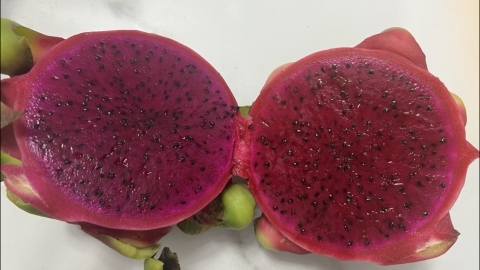Does eating red-fleshed dragon fruit cause internal heat?
Generally speaking, eating red-fleshed dragon fruit does not cause heatiness (excess internal heat). The detailed explanation is as follows:

Heatiness refers to internal heat symptoms caused by an imbalance of yin and yang in the body. Dragon fruit has a sweet and neutral nature, affecting the stomach and large intestine meridians. As a type of dragon fruit, red-fleshed dragon fruit shares these properties. From the perspective of nutritional components, red-fleshed dragon fruit is rich in water, dietary fiber, vitamin C, anthocyanins, and other nutrients. Water helps replenish bodily fluids, promotes metabolism, and aids in waste elimination; dietary fiber stimulates intestinal motility, prevents constipation, and maintains normal intestinal function, all of which help maintain internal bodily equilibrium and do not lead to heatiness.
Although eating red-fleshed dragon fruit does not cause heatiness, excessive consumption may burden the gastrointestinal system and cause discomfort. Excessive intake of dietary fiber from red-fleshed dragon fruit may lead to digestive symptoms such as diarrhea and bloating. Additionally, red-fleshed dragon fruit contains relatively high levels of sugar; excessive consumption by individuals with diabetes or impaired glucose regulation may cause elevated blood sugar levels.
Red-fleshed dragon fruit can be eaten raw or used to make juices, salads, and more. When eaten raw, simply wash, cut open, and scoop out the flesh with a spoon. When preparing juices or salads, additional ingredients such as sugar, yogurt, or other flavorings may be added according to personal taste preferences.







